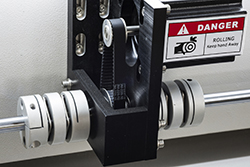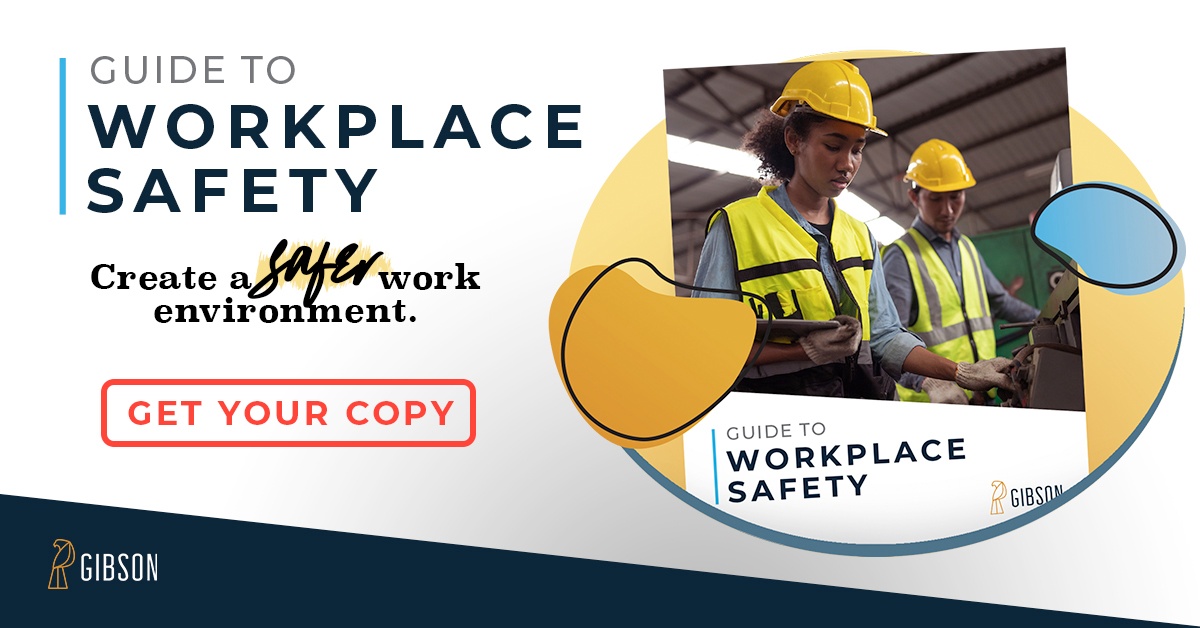 Crushed hands and arms, severed fingers, amputations, burns, blindness. Machinery-related injuries are numerous, and their impact on a worker’s life can be catastrophic. Most often these injuries are preventable with the use of safeguards. OSHA shares a good rule to remember: “Any machine part, function, or process which may cause injury must be safeguarded.” What are the methods for properly safeguarding machinery?
Crushed hands and arms, severed fingers, amputations, burns, blindness. Machinery-related injuries are numerous, and their impact on a worker’s life can be catastrophic. Most often these injuries are preventable with the use of safeguards. OSHA shares a good rule to remember: “Any machine part, function, or process which may cause injury must be safeguarded.” What are the methods for properly safeguarding machinery?
Guards
Guards are barriers which prevent access to danger areas. There are four main types of guards:
- Fixed Guard – provides a barrier, permanent part of the machine, preferable to all other types of guards
- Interlocked Guard – when this type of guard it opened or removed, the tripping mechanism and/or power automatically shuts off or disengages, and the machine cannot cycle or be stated unless the guard is back in place
- Adjustable Guard - provides a barrier which may be adjusted to facilitate a variety of production operations
- Self-Adjusting Guard – provides a barrier which moves according to the size of the stock entering the danger area
Devices
Aside from guards, another common safeguarding method is that of safety devices, a few of which include:
- Pullback Devices are devices which utilizes a series of cables attached to the operator’s hands, wrists, and/or arms. This is primarily used on machines with stroking action. It allows access to the point of operation when the slide/ram is up, but withdraws hands when the slide/ram begins to descend
- Restraint Devices use cables or straps attached to the operator’s hands and a fixed point. They must be adjusted to let the operator’s hands travel within a predetermined safe area. Hand-feeding tools are often necessary if the operation involves placing material into the danger area.
- Safety Controls include tripwire cables, two-hand control, etc.
- Safety tripwire cables are a device located around the perimeter of or near the danger area. The operator must be able to reach the cable to stop the machine.
- Two-hand control means the machine requires constant, concurrent pressure in order to activate. The operator’s hands must be at a safe location, on the control buttons, and at a safe distance from the danger area while the machine completes its closing cycle.
- Gates are movable barrier devices which protect the operator at the point of operation before the machine cycle can be started. If the gate does not fully close, machine will not function.
Safeguarding By Location Or Distance
Another method to protect workers from mechanical hazards is to locate the machine or its dangerous moving parts so that they are not accessible or do not present a hazard to a worker during normal operation. It is important to maintain a safe distance from the danger area at all times.
Feeding And Ejection Methods
Automatic and/or semi-automatic feed and ejection methods do not require the operator to place his or her hands in the danger area. Guards are still required to protect the operator, however, by eliminating the need for operator involvement in the danger area, employees are less likely to be injured.
The use of robots can help reduce hazards to workers. These are machines that load and unload stock, assemble parts, transfer objects or perform other tasks. They are most effective in high-production processes which require repeated routines.
Miscellaneous Aids
There are additional aids which can be used to help protect workers such as awareness barriers, protective shields and hand-feeding tools. Generally, these do not provide complete protection and should be used in conjunction with other safety measures.
Remember: Any machine part, function, or process which may cause injury must be safeguarded!!





